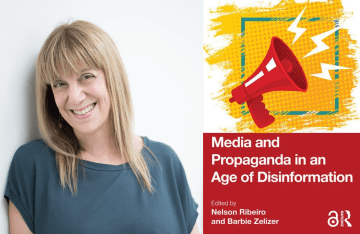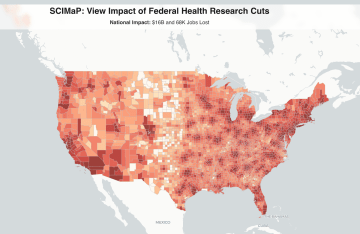New Research Uncovers How Synthetic Nicotine Brands Market E-Cigarettes to Young People on Social Media
A study with Annenberg Postdoctoral Fellow Jiaxi Wu found that most ads for e-cigarettes on Instagram, a platform dominated by users under the age of 25, do not adhere to FDA health warning requirements.

In This Article:
- In a study of over 2,000 promotional Instagram posts for 25 synthetic nicotine brands, only 263 posts (13%) adhered to FDA health warning requirements
- Posts that included health warnings and a larger warning size received less user engagement
- Enforcement of FDA-compliant health warnings on social media may reduce youth engagement with synthetic nicotine and tobacco marketing
In a new study published in the Journal of the American Medical Association (JAMA) Open Network, researchers including lead author Jiaxi Wu, now a postdoctoral fellow at the Health Communication & Equity Lab at the Annenberg School for Communication, analyzed over 2,000 Instagram posts by synthetic nicotine e-cigarette brands and found that 87% did not adhere to Food and Drug Administration (FDA) guidelines for tobacco marketing.

Synthetic nicotine is nicotine created in a laboratory rather than from tobacco leaves and currently accounts for nearly two-thirds of all product offerings in vape shops across the U.S. Though very little is known regarding the health effects associated with synthetic nicotine use, it is pharmacologically similar to tobacco-derived nicotine and likely has similar addictive properties. Nicotine addiction adversely affects brain development and psychosocial health in young people, and those who use e-cigarettes are at increased risk of using combustible tobacco products like traditional cigarettes.
The FDA passed a requirement in 2022 that advertisements for e-cigarettes containing synthetic nicotine need to include a health warning that takes up 20% of the advertising space and appears in the upper portion of the ad.
Despite this, synthetic nicotine companies have been very successful at evading this requirement, especially on social media, where advertisements can reach the millions of teenagers and young people who use these platforms daily. These companies also produce products in flavors previously banned in traditional tobacco products and cartridge-based e-cigarettes, like cotton candy and bubblegum, which youth are especially drawn to.
In fact, 74% of the posts the researchers analyzed featured flavored products, often showing visually appealing fruits or desserts. Additionally, many of the posts that featured people showed them engaged in vaping, which research shows can increase the urge to vape and smoke combustible cigarettes.
“Because synthetic nicotine isn’t derived from tobacco, it evaded the regulatory authority of the FDA until April 2022,” says corresponding author Traci Hong, a Boston University Professor of Communications and Hariri Institute Research Fellow. “This regulatory loophole allowed manufacturers to flood the market with synthetic nicotine products with flavors previously banned in traditional tobacco products due to their appeal to youth. Additionally, these products were often marketed as 'tobacco-free nicotine,' fostering positive perceptions and potentially increasing trial among youth.”

Methodology
For the study, the researchers developed a computer vision algorithm — a type of artificial intelligence that enables computers to perceive and understand information from visual data— to analyze over 2,000 Instagram posts from 25 different synthetic nicotine brands over a 14-month period (August 2021 – October 2022).
Post comments rather than likes were used to determine audience engagement, a key indicator of how much audiences are enjoying and connecting with the post content.
Their analysis found that the vast majority (87%) of posts did not include warning labels informing users about the health risks. In fact, only 13% of posts complied with both FDA health warning requirements.
In their content analysis, the researchers found that health warnings can lower social media engagement. Posts with health warnings received an average of 5.4 comments, while those without health warnings received an average of 1.8 comments. Furthermore, larger pixel area for warning labels relative to the post was linked to fewer comments.
“This study shows the urgency to share evidence-based research with the FDA and policymakers to deter the uptake of tobacco products,” says Wu, explaining that these ads encourage the trial of e-cigarettes as well as a variety of nicotine and tobacco-based products.
The researchers hope that the use of health warnings can convey the risks associated with tobacco products to social media users, which may ultimately deter uptake and use of tobacco products.
"Health Warnings on Instagram Advertisements for Synthetic Nicotine E-Cigarettes and Engagement" was authored by Jiaxi Wu, Briana M. Trifiro, Lynsie R. Ranker, Juan Manuel Origgi, Emelia J. Benjamin, Rose Marie Robertson, Aruni Bhatnagar, Andrew C. Stokes, Ziming Xuan, Derry Wijaya, Bryan Plummer, Jennifer Cornacchione Ross, Jessica L. Fetterman, and Traci Hong.
A version of this story was first published by Boston University Hariri Institute for Computing.



